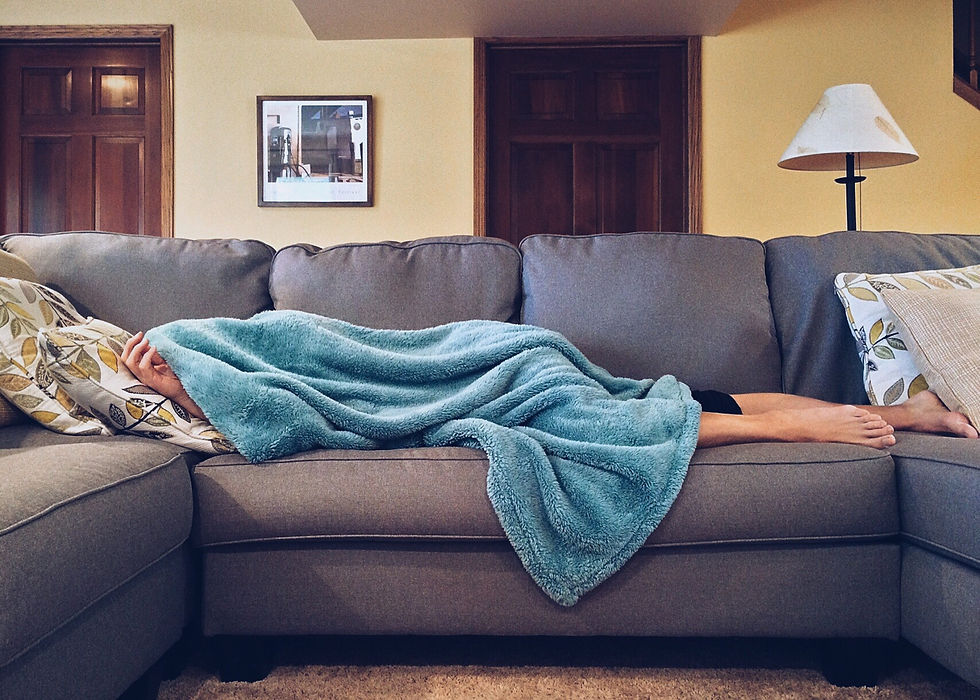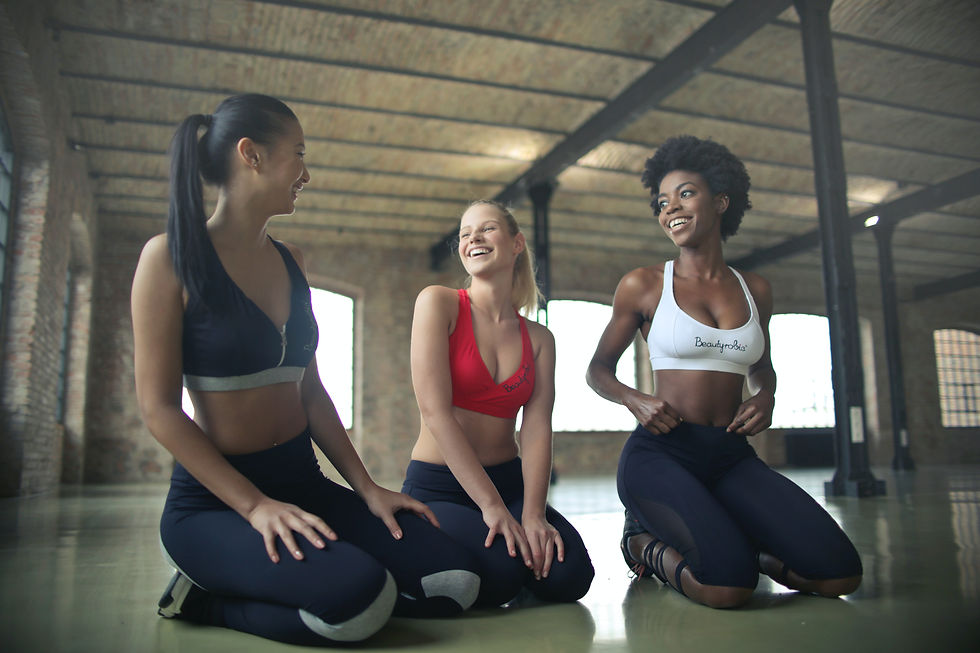If you would prefer to listen to this article, click here.
Exercise is good for you, and most of us don't get enough of it. This is not breaking news, I know, but it is the reason that you clicked on this article, right? First, you should know that you are not alone - a whopping 80% of American adults do not get the recommended amount of aerobic and resistance exercise, and this has been linked to high rates of preventable chronic diseases, early death, and billions of dollars in healthcare spending.

If more of us exercised, we could improve not only our quality of life, but also reduce healthcare costs nationwide. That's just a theory, anyway.
Exercise is beneficial for a plethora of reasons, and research shows that it is good for everyone, including people with chronic conditions, people with disabilities, and women who are pregnant – unless of course you have been told by your doctor that exercise is strictly prohibited.
Yet, it can still be really hard to find a way to fit exercise into what feels like an already incredibly busy life. So, if you are struggling to bridge the gap between knowing the benefits of exercise and actually exercising, then this article is for you.
Here are 5 ways that you can make exercise an easy habit for you to include in your day-to-day life:
Tip number 1: Pick something that you actually like
When I ask clients what they think they should do to get more active, 99% of the time I get one of two answers – walking or going to a gym. Both of these answers are valid, but the fact that most people only give these two answers suggests that many of us may need a reminder that there are so many more things that count as exercise!

These kids have the right idea.
Before we get into those options, let’s quickly review what amount of physical activity you should be aiming for in the first place. The United States Department of Health and Human Services Physical Activity Guidelines for Americans state that adults should aim to get:
“150 minutes (2 hours and 30 minutes) to 300 minutes (5 hours) a week of moderate-intensity,”
OR
“75 minutes (1 hour and 15 minutes) to 150 minutes (2 hours and 30 minutes) a week of vigorous-intensity aerobic physical activity,”
AND
“...muscle-strengthening activities of moderate or greater intensity and that involve all major muscle groups on 2 or more days a week.”
The guidelines also state that “preferably, aerobic activity should be spread throughout the week.”
So, let’s say that you are starting out and decide to aim for the lower end of the threshold – that could translate to around 3.5 hours a week of working out. How you decide to fill those hours is entirely up to you. That could include 2 days a week of dancing for an hour, a 30-minute walk one evening, and 30 minutes of weights on two separate days. If you opt for vigorous activity, that could look like a 30-minute run on 3 mornings out of the week, and the same weights routine.

EDM concert, or dancing gym? It's up to you.
But like I said, how you fill that time really is your decision. If you cannot imagine yourself doing Zumba, or you would rather wait in line at the post office than go for a run, then here are some other activities that you can do that can certainly count as aerobic exercise:
Tango dancing
Pilates
Yoga
Hiking
Belly dancing
Boxing
Jump rope
Swimming
Cycling
Trampolining
Hula-hooping
And so many more!
Try your best not to restrict your perception of exercise to things that you don’t like. Instead, look for things that you actually find fun and would look forward to doing.

And it helps to smile too!
Tip number 2: Avoid doing too much at once
Something else that you may be struggling with is doing too much at once. Going from 0 to 100 is not a good idea with exercise, and this is because your body needs time to get used to your new activity level. Everything from the efficiency with which your lungs exchange carbon dioxide and oxygen, to the strength of your stabilizing muscles, to the rate at which the mitochondria in your cells produce energy needs an adjustment period. This is why it is so important to “start low, and go slow” as the guidelines state.
Doing more than your body is prepared for can lead to injury, which could in turn keep you from continuing to exercise and put you right back at square one. It can be tempting to put on extra plates at the gym because you see others doing the same, but remember that you have no idea how long these strangers have been exercising for or what their regimen looks like. You have to do what makes sense for where you are, and what your body can currently handle.
On a slightly different note, keep in mind that the guidelines emphasize spacing out exercise events; it is not advisable to try to do 3.5 hours of exercise on one day out of the week. Instead, it is best to spread your efforts throughout the week.

Don’t try to work out one day a week and neglect the other 6 days – the body knows.
The key here is to listen to your body and let it guide you as you ramp up your activity level. Persistence and patience will take you far!
Tip number 3: Do not limit exercise to a specific time of day
Having set times to exercise each day can be wonderful for maintaining consistency with your routine. Nevertheless, moving throughout the day, including in ways that may not seem to make much of a difference, is actually good for you, too.
Being physically active really is a lifestyle, and living an active life, instead of just limiting movement to specific times of the day, is thought to contribute significantly to the longevity of some of the longest-lived people in the world – the Blue Zones centenarians.
As Dan Buettner, author of “The Blue Zones: 9 Lessons for Living Longer from the People Who've Lived the Longest,” puts it:
"[Blue Zone residents] live in environments that nudge them into physical activity every 20 minutes or so."
They move naturally by doing things like gardening, traversing the streets to get to a local café, and doing everyday chores by hand instead of using your typical household appliances.
Take a moment to think about what your day could look like with a little more activity mixed in. For me, I think of washing the dishes by hand instead of using the dishwasher, or passing the vacuum cleaner over the rug instead of using a Roomba. Of course, these modern conveniences have innumerable benefits, and there are times when it just makes more sense to use them. Still, it may be worth it to ask yourself what you lose by relying solely on these conveniences.

She knows what's up.
Keeping in line with not limiting movement to specific times of day, I would like to highlight the research that has been done on the disadvantages of sitting for prolonged periods of time. Evidence suggests that sitting for hours on end is linked to metabolic syndrome, which has 5 key elements: high blood pressure, high blood sugar, abnormal triglyceride and cholesterol levels, and an accumulation of fat around the waist. Sitting too much has also been associated with cancer and heart disease development.
Sitting for 8 hours a day is not great for health, but there are ways to break up this prolonged inactivity; getting up every 30 minutes to do something like grab some water, taking a short walk, or even doing some air squats are just a few examples. If you have other ideas, feel free to share them below – you never know who they may help!
Tip number 4: Get some teammates
Working out with your partner or a group of friends can be great for keeping you motivated. I hear from a lot of my clients that working out alone feels dreadful, but that having their partners or kids accompany them makes a world of a difference. If you resonate with that, then it may be a good idea to join a fitness class at a local gym or community center, round up some friends to go hiking on the weekends, or perhaps take your kids to the park while you do some lunges nearby. If you know that you need social support, go out and find it!
Having workout buddies is great because it also helps you to hold yourself accountable. Another advantage is that if one of you is more experienced with a particular form of exercise, you can teach the other proper form and technique. This can help to prevent injuries too.

This is the good kind of peer pressure.
Now, if you are an introvert like me, finding an in-person workout buddy can be hard. Thankfully, we live in a world where online communities also exist. If you crave a sense of comradery but cannot seem to find it locally, there are tons of people online who are dedicated to solving that problem for you. Personally, I love following YouTubers who post follow along exercise videos, as it makes me feel like there is someone else in the room with me. Some YouTubers even offer live stream classes, so that could be a better option if you really need that real time interaction.
All in all, know that you are NOT alone, and you do NOT have to go it alone!
Tip number 5: Know your why
This final tip is perhaps the most important one – it is to know your “why.” One of my favorite quotes in the world comes from Viktor Frankl, and it encapsulates the importance of establishing a “why” perfectly.

Take a moment to really pause and think about this. Why do you want to exercise? The question is not why you think you should want to exercise, but really, why do you want to exercise? Is it to be around to see your kids graduate from high school? Is it to improve your mood, or stave off symptoms of depression and anxiety? Is it to be able to travel to the Grand Canyon one day and do a 6-hour hike without getting tired?
Don't be afraid to get really, really specific. That specific why is what is going to help you to get up and get moving when you don't feel like it. It is going to pop up when your brain comes up with a multitude of great reasons why you deserve to stay in bed today. It is the thing that will keep you going no matter what is going on in your life. When you know your why, I can promise you that your view of exercise will change.
If you learned anything new or think that someone you care about could benefit from this information, share this article, and subscribe to the blog for regular updates on commonly asked nutrition questions.
Enjoy today!
References:
CBC Radio. (2017, February 22). Hate the gym? History explains why the treadmill can feel like torture | CBC Radio. CBC. https://www.cbc.ca/radio/thecurrent/the-current-for-february-22-2017-1.3992510/hate-the-gym-history-explains-why-the-treadmill-can-feel-like-torture-1.3992573
Laskowski, E. (2018). Sitting risks: How harmful is too much sitting? Mayo Clinic. https://www.mayoclinic.org/healthy-lifestyle/adult-health/expert-answers/sitting/faq-20058005
U.S. Department of Health and Human Services. (2018). Physical Activity Guidelines for Americans 2nd edition. https://health.gov/sites/default/files/2019-09/Physical_Activity_Guidelines_2nd_edition.pdf

Comments